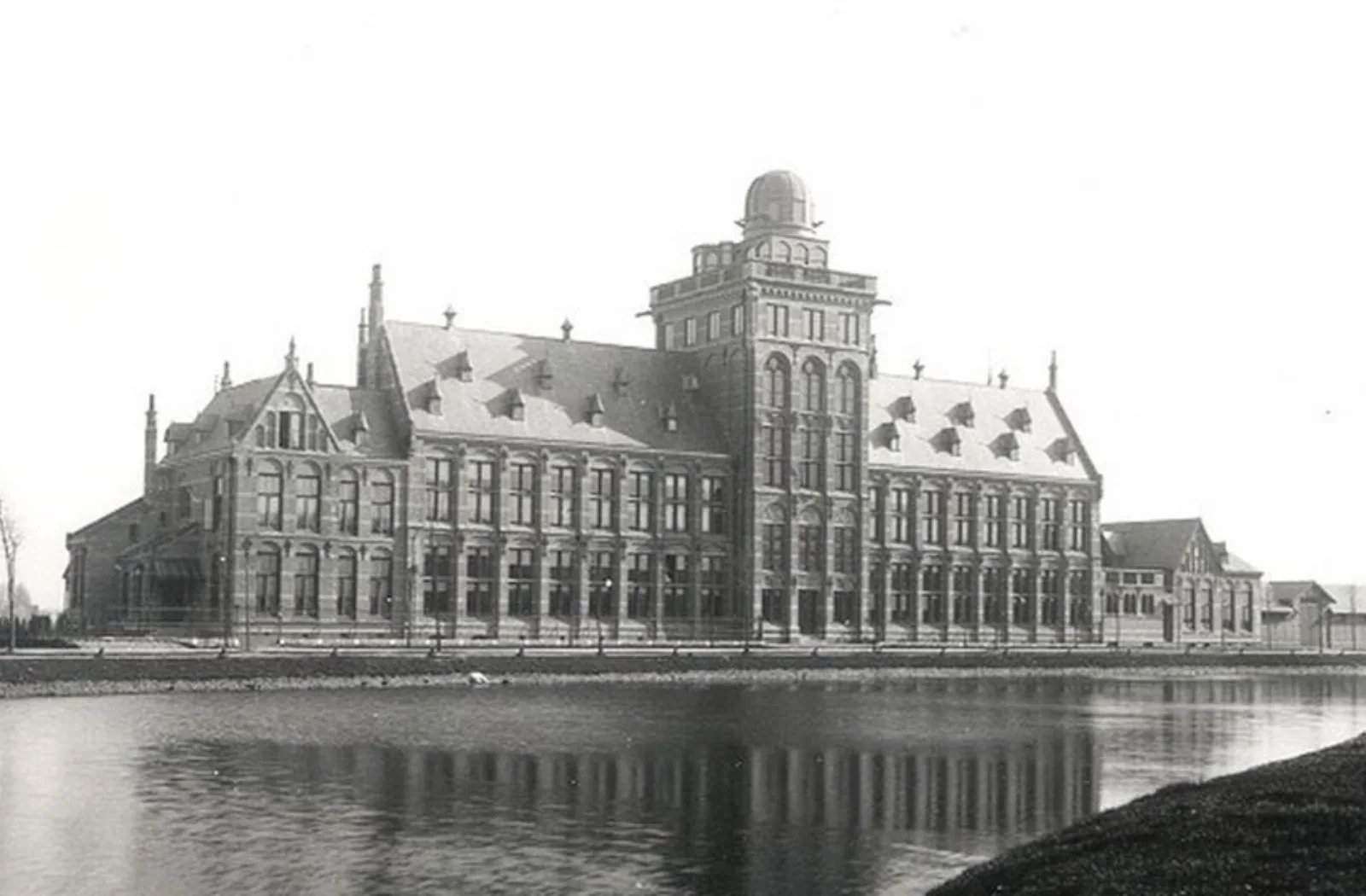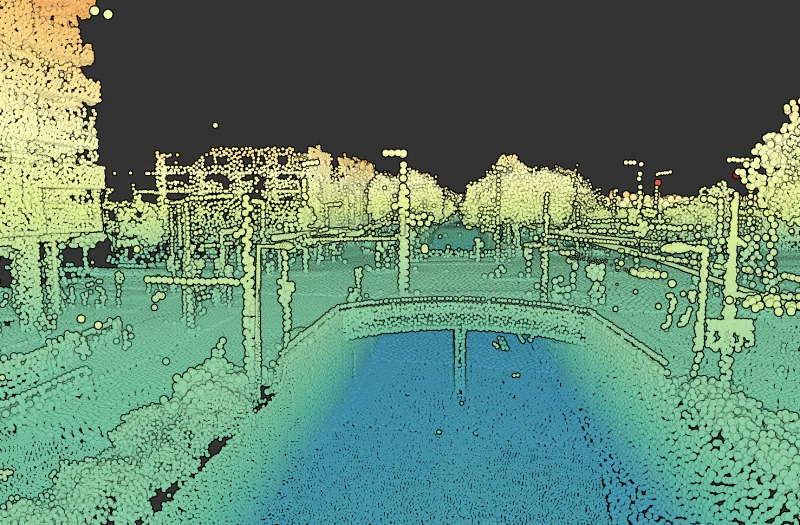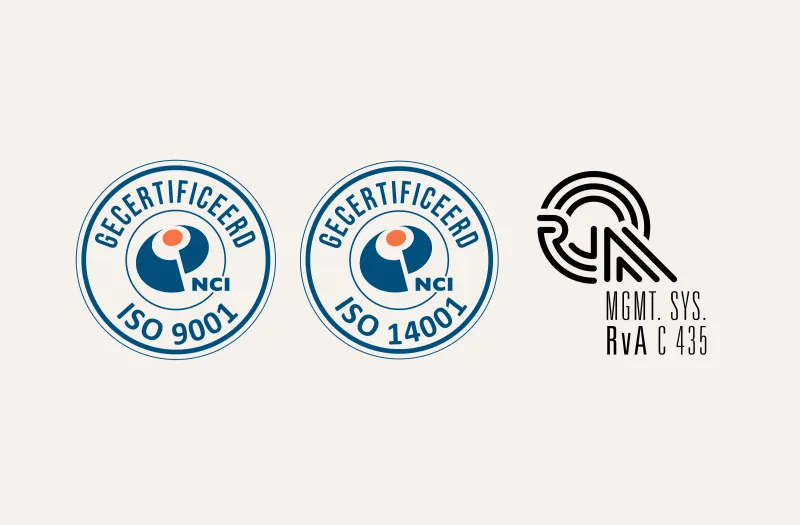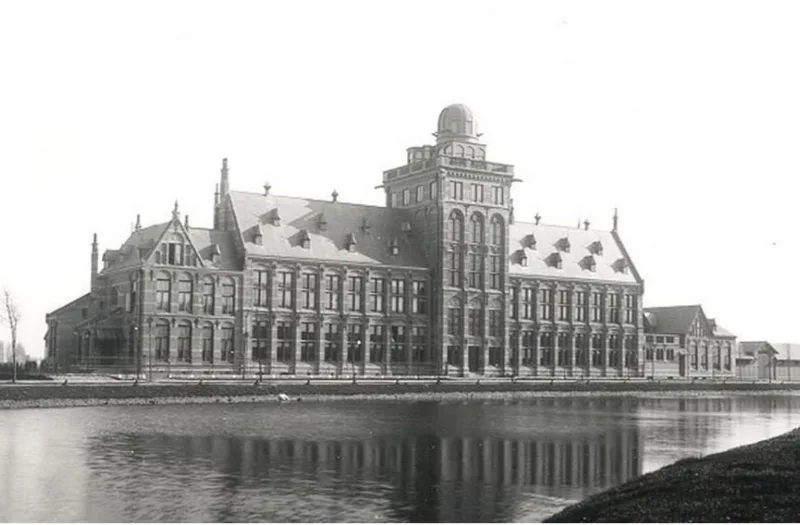On the platform between the pillars of the Geodesy Building stood a unique clock with an important role in Dutch time history until 2019.
Observatory Clock
The Strasser & Rohde No. 233 was purchased by the "Sterrewacht Leiden" in 1901. In 1904 the clock was transferred to the Geodesy Building at Kanaalweg 4 in Delft, where it was connected to a transit instrument in the observatory for determining exact time. Until 1930, this was one of the most accurate clocks in Delft.
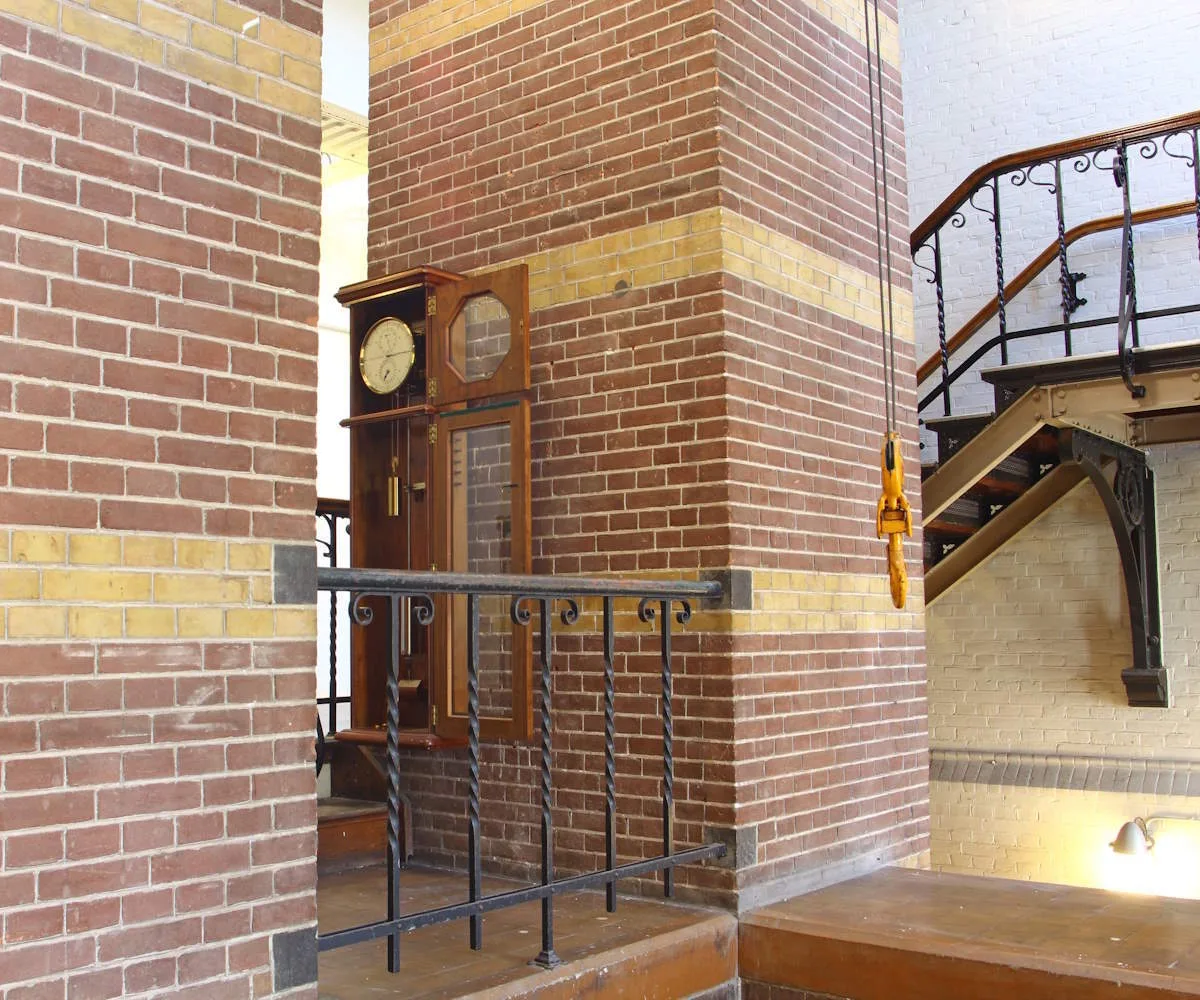
Made by the German company Strasser & Rohde, known for their production of astronomical pendulum clocks, the No. 233 was a precision pendulum clock of the first quality. The clock is fitted with a Graham escapement with sapphire palettes and the movement is partially fitted with sapphire bearing stones.
A special feature is the temperature-compensated pendulum. This pendulum, exactly one meter long, called a "second pendulum," contained a cylinder filled with mercury. This mercury cylinder compensated for temperature fluctuations, keeping the pendulum center of gravity constant and the duration of the pendulum movement the same, regardless of temperature changes. A small weight on a table, a concept devised by Christiaan Huygens, was used to very accurately influence the time duration of a pendulum's movement.
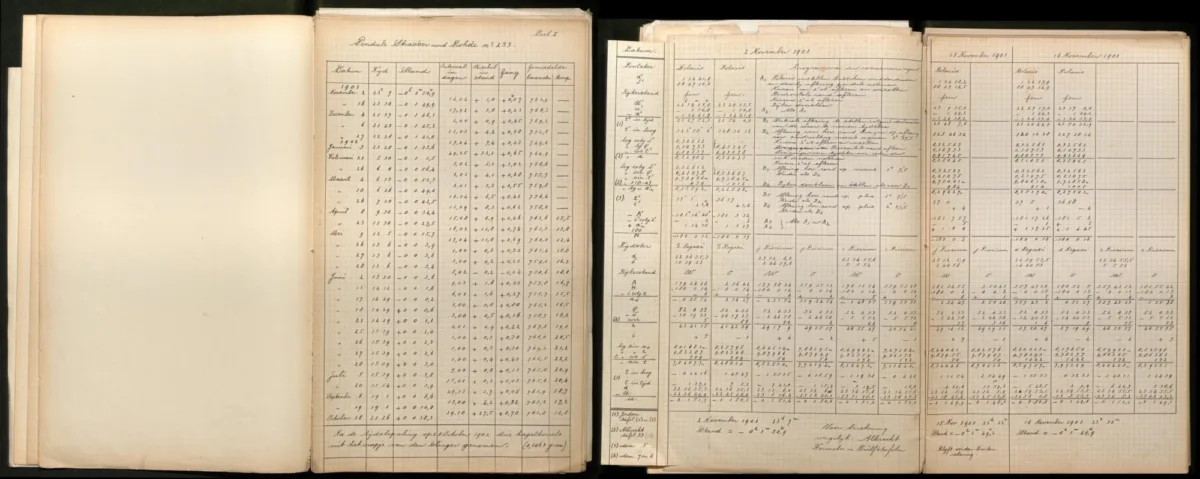
The (presumably) oldest preserved measurements taken in the dome to determine time. Using these, the Strasser & Rohde clock 233 was calibrated.
Decommissioning
After the introduction of quartz clocks and radio time signals in the 1930s, it was no longer necessary to control the clock with the passage instrument. In 2019, the clock was carefully dismantled and moved to TU Delft's heritage depot, where it is kept under ideal climatic conditions.
Learn more
- More about moving the clock on the Bewogen Tijd website.
- More about geodetic heritage on the website of De Hollandse Cirkel.
